英语高中牛津译林版选修十unit 3《protecting ourselves》课件1
文档属性
| 名称 | 英语高中牛津译林版选修十unit 3《protecting ourselves》课件1 |  | |
| 格式 | zip | ||
| 文件大小 | 893.6KB | ||
| 资源类型 | 教案 | ||
| 版本资源 | 牛津译林版 | ||
| 科目 | 英语 | ||
| 更新时间 | 2013-03-15 22:53:14 | ||
图片预览


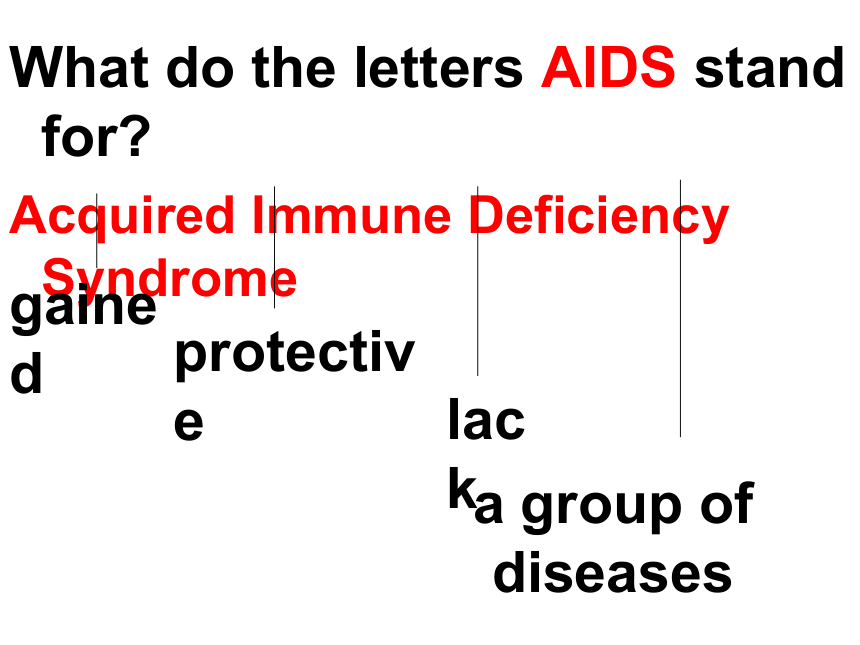

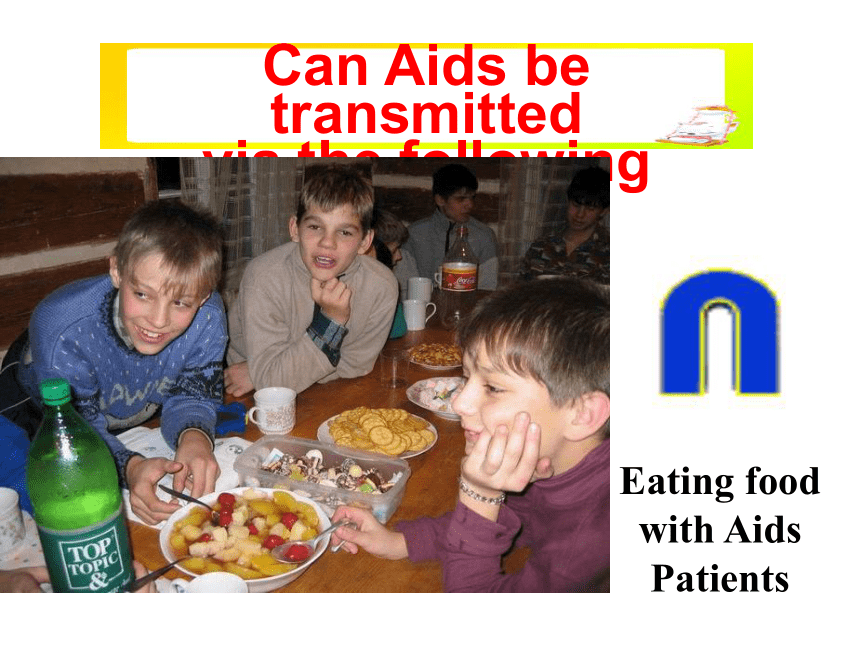
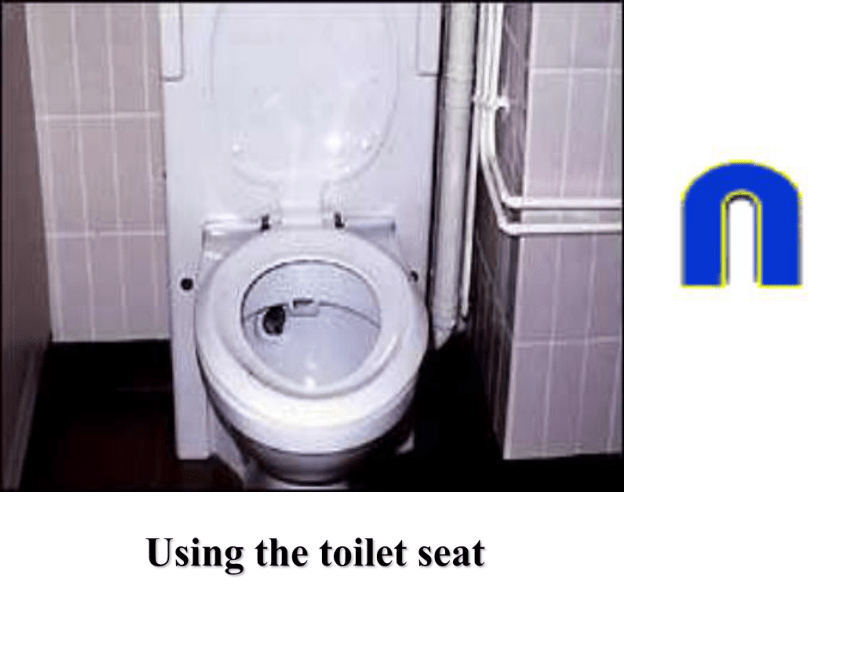

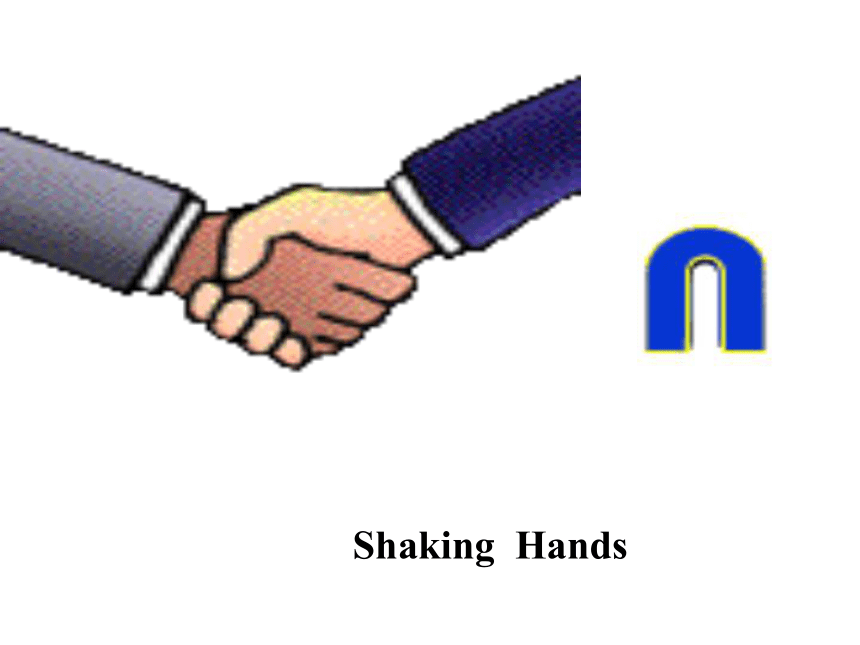

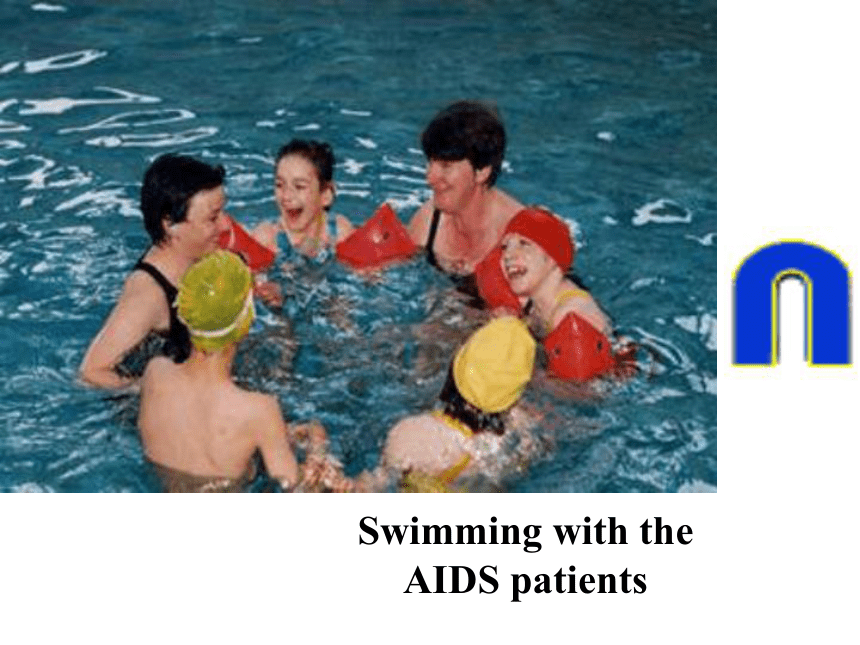

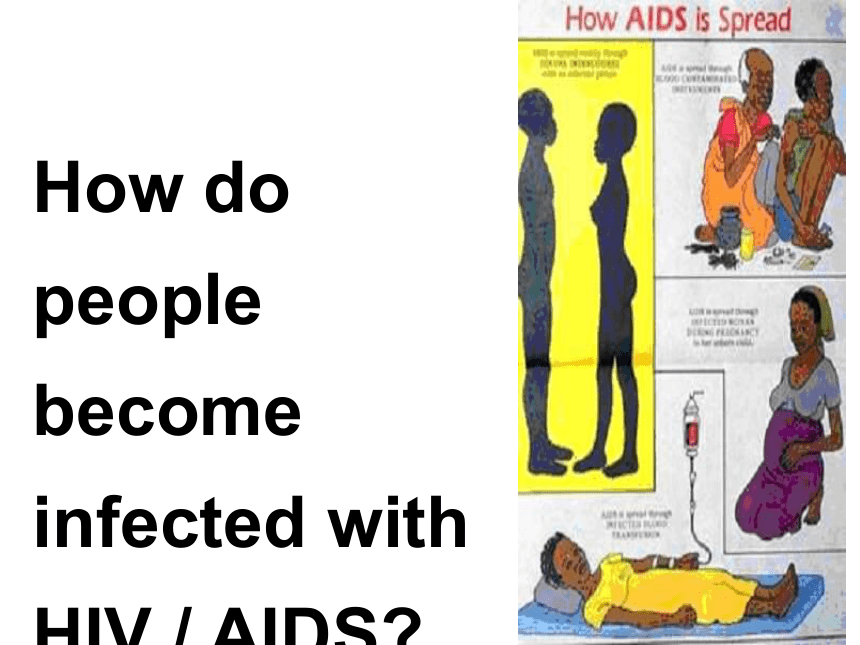
文档简介
课件57张PPT。Protecting ourselvesUnit3Smoking kills!
Say no to drugs!
Don’t drink and drive!
Stop the chain of AIDS!What do the letters AIDS stand for?
Acquired Immune Deficiency Syndrome
Red ribbon is related to AIDS. It means that we should give AIDS patients love and care, understanding and support.Can Aids be transmitted
via the following routes? Eating food with Aids PatientsUsing the toilet seatkissingShaking HandsHuggingSwimming with the AIDS patientsgiving bloodHow do people become infected with HIV / AIDS?Reading Aids todayReading Aids today People stand in line in the shape of the red ribbon Are you familiar with this red ribbon? What’s it related to?
What does it mean? Red ribbon is related to AIDS. It means that we should give AIDS patients love and care, understanding and support.① What do the letters AIDS stand for?
AIDS= Acquired Immune Deficiency Syndrome
Let’s read the article and find out the figures in the article and circle them, and then fill in the table.Page 36, C2:
Match each item below with the correct number. Write the correct letters in brackets.ScanningHow well did you understand the details in the TV news special transcript?
Read it again and then fill in the following chart with correct number.Filling in the blanksg (>15 million)
e (740,000)a (> 30 million)
Filling in the blanksf (> 68 million)b (105,000)d (about 7,000)Filling in the blanksc (>4 million) Read the text in detail and answer the following questions. Questions ①What does Aids stand for?
②How does HIV affect the body?
③What are the three ways Aids is transmitted?
④What is being done in China to help control the
Aids epidemic?
⑤What is the aim of UNAIDS?
⑥What does UNAIDS so for people who think
they might have the virus?
⑦Why did Ajani not catch the virus from his
mother? Fast-reading for general idea. 1. What is this TV news special about?
It gives some detailed information about aids and how to fight the spread of Aids.
2. How many people around the world are infected with HIV every day?
About 7,000 people.
3. What places have been affected by Aids?
Almost every country in the world has been affected by Aids. Detailed reading for important information (1) What does Aids stand for?
Aids stand for acquired immune deficiency syndrome.
(2) How many children have been affected by Aids so far?
About 19 million children have been affected by Aids, among whom more than 4 million have been killed by Aids and more than 15 million have lost their parents to Aids. (3) How does HIV affect the body?
HIV is a virus that enters a person’s blood and attacks the body’s immune system, so the immune system is weakened, and them it gradually loses the ability to fight illnesses. Eventually the body’s immune system becomes so weak that the person becomes sick very easily. (4) What are the three ways Aids is transmitted?
The three ways are unprotected sex, blood-to-blood contact and mother-to-child transmission.
(5) What has been done in China to help control the Aids epidemic?
China is working hard to control the epidemic, and has opened HIV/Aids labs to test and monitor the disease across the country. In 2003, the government started providing free Aids drugs for Aids patients in need.
(6) What is the aim of UNAIDS?
The aim of UNAIDS is to help prevent the spread of Aids. (7) What does UNAIDS do for people who think they might have the virus?
It provides people with HIV testing and HIV or Aids medical care. It also teaches young people how to prevent Aids, and sets up treatment centres where mothers with HIV can receive medicine to help keep them from passing HIV on to their children.
(8) Why didn’t Ajani and his sister catch the virus from his mother?
Because his mother had access to prescription Aids medications during pregnancy. Read again and answer:
Why will a person always carry HIV if he or she is infected ? ( Not more than 6 words)
Because of no cure for it. 2. Why did Ajani not catch the virus from his mother? ( Not more than 10 words)
Because she had access to prescription Aids medication during pregnancy.
3. How does Aids weaken a person’s immune system? (Not more than 18 words)
By making the infected person lose the ability to fight illnesses, even common ones like the flu. 4. List at least 5 items about what have been done against Aids? (Not more than 18 words)
Testing , monitoring, developing new technology, providing prevention education and medicine distribution programmes, and establishing treatment centers.preventexamplereason information knowninfectingMeasures Providingtogetherkey People get Aids after having been _______ with HIV. Aids the body’s ______ system and leaves a person defenceless ______ infections and illness. What’s worse, there is no ____ for the disease. So many people lose their lives __ Aids. The virus of Aids is __________ in three ways---through _________ sex,blood –to-blood contact and mother-to-child transmission. HIV and Aids are spreading at a _________ rate. Luckily, people have realized how ______the problem is and have been
_______ in fighting HIV and Aids .Many have devoted their body and ___ to ________ the disease, bringing in up-to-date technology and providing free drug for Aids patients in ___. But they all ________ to the view that _______ people at risk , as well as treating infected people, is the to stopping the disease in the future.infectedweakensimmuneagainstcuretotransmittedunprotectedfrighteningsevereinvolvedsoulmonitoringneedsubscribeeducatingkey2. What purpose does Paragraph 1 serve as in the passage ?
A. To provide background information of the topic
B. To put forward the topic and attract readers’ attention to it
C. To use an example to support the topic
D. To offer basic knowledge of the topicwhile-readingActivity 3: Read and answer the questions.1. What does Paragraph 1 talk about? Careful reading
HIVAIDSHow does HIV cause Aids?3. What is the relationship between AIDS and HIV?( Para 2)while-readingActivity 3: Read and answer the questions.3. What is the relationship between AIDS and HIV? (Paras 2)while-readingHIV is a that causes .
AIDS is a kind of disease. (There is no cure for Aids)People get after having been infected with .virusAIDSincurableAIDSHIVdeadly and
incurabledeadly Read para 2 carefully and get
the detailed information about Aids.Cause:
Cure:
SymptomsSometimes:
When
Eventually:a virus called HIVno cure for… … live for years with no outward symptoms, so…carriers…has Aids, …loses the ability to fight……becomes so weak that …
can become very ill from usually mild…What are the three ways Aids spreads from person to person?unprotected sex—the vast majority of people receive … through…with…has HIVblood —shares needles with…
or receives…blood during an operationfrom a mother to
her child —when they are pregnant or
giving birth, or through their
breast milkThe structure of Paragraph 4Topic sentence:
_____________________________
Supporting sentences:
_____________________________ ________________
Concluding sentence: __________________________________Aids has become a problem all over the world.According to..,>4 million children…, >15million childrenSomething must be done to stop this disease.while-readingActivity 3: Read and answer the questions.4. What’s the fun_ction of Paragraph 4?
A. concluding paragraph
B. linking paragraph
C. supporting paragraph while-readingSomething must be done to stop the diseasePredict: What will be talked about in the next para?Activity 3: Read and answer the questions. Please try to find out the topic sentence in Paras 5-9.Something must be done to stop the diseasewhile-readingThe topic sentence of Paras 5-9?Activity 3: Read and answer the questions.Help
from governmentHelp
from organizationChinato Chinathe United NationsAjaniHelp
from government_________________________________________________________Para5Para6Para7,8Para9while-readingsomething must be done to stop the diseaseThe topic sentence of Paras 5-9.Activity 3: Read and answer the questions.
Answer the following questionsWhat is being done in China to help control the spread of Aids?
What is the aim of UNAIDS?
What does UNAIDS do for people who think they might have the virus?
Why did Ajani not catch the virus from his mother?1. What is being done in China to help control the spread of Aids? The government has opened labs to monitor the disease, and in 2003 it also started providing free drugs for Aids patients.2. What is the aim of UNAIDS?The aim of UNAIDS is to help prevent the spread of Aids.3. What does UNAIDS do for people who think they might have the virus? It provides people with HIV or Aids medical care and HIV testing.4. Why did Ajani not catch the virus from his mother?Because his mother had access to prescription Aids medicines when she was pregnant.Main idea of each paragraph
para 2
para 3
para 4
para 5
para 6
para 7
para 8
Para 9 Body paragraphsthe definition of Aids and one of
the symptomsthe ways it is spreadAids—a global problemAids in China and the government’s effortinternational help to Chinaan organization called UNAIDSthe severe situationSolution to the problemInterview: Work in pairs: suppose one of you is an Aids patient, your partner is a reporter working for the Red Cross.
Practise asking and answering questions according to the text.What can be done to improve the situation?DiscussionDiscussionWhat can be done to improve the situation of AIDS? by the government:
by specialists and doctors:
by the patients themselves:
by the public:
Let’s enjoy a healthy life andmeanwhile care for each other!What conclusion can we draw according to the passage?
The problem of Aids is becoming more serious throughout the world.
The UN and different governments have been doing something about the problem.
The public must realize the gravity of the problem and everyone should do his bit to stop the spread of Aids by enjoying a healthy life.
At the same time, the public should care for each other and not have prejudice against those with Aids or HIV.Homework:
Review the whole text after class.
Each group designs a PSA (public service advertisement) about Aids for the Red Cross. Write down what you know about Aids and call on people to care for Aids patients.
C2, P36
1g. 2e. 3a. 4f. 5b. 6d. 7c
D, P36
1c. 2d. 3f. 4b. 5e. 6a. E, P37
1. Breast milk 2. outward
3. weeping 4. bid
5. prescription
6. burst on the scene
Homework:
Language points
Acquired Immune Deficiency Syndrome
Red ribbon is related to AIDS. It means that we should give AIDS patients love and care, understanding and support.Can Aids be transmitted
via the following routes? Eating food with Aids PatientsUsing the toilet seatkissingShaking HandsHuggingSwimming with the AIDS patientsgiving bloodHow do people become infected with HIV / AIDS?Reading Aids todayReading Aids today People stand in line in the shape of the red ribbon Are you familiar with this red ribbon? What’s it related to?
What does it mean? Red ribbon is related to AIDS. It means that we should give AIDS patients love and care, understanding and support.① What do the letters AIDS stand for?
AIDS= Acquired Immune Deficiency Syndrome
Let’s read the article and find out the figures in the article and circle them, and then fill in the table.Page 36, C2:
Match each item below with the correct number. Write the correct letters in brackets.ScanningHow well did you understand the details in the TV news special transcript?
Read it again and then fill in the following chart with correct number.Filling in the blanksg (>15 million)
e (740,000)a (> 30 million)
Filling in the blanksf (> 68 million)b (105,000)d (about 7,000)Filling in the blanksc (>4 million) Read the text in detail and answer the following questions. Questions ①What does Aids stand for?
②How does HIV affect the body?
③What are the three ways Aids is transmitted?
④What is being done in China to help control the
Aids epidemic?
⑤What is the aim of UNAIDS?
⑥What does UNAIDS so for people who think
they might have the virus?
⑦Why did Ajani not catch the virus from his
mother? Fast-reading for general idea. 1. What is this TV news special about?
It gives some detailed information about aids and how to fight the spread of Aids.
2. How many people around the world are infected with HIV every day?
About 7,000 people.
3. What places have been affected by Aids?
Almost every country in the world has been affected by Aids. Detailed reading for important information (1) What does Aids stand for?
Aids stand for acquired immune deficiency syndrome.
(2) How many children have been affected by Aids so far?
About 19 million children have been affected by Aids, among whom more than 4 million have been killed by Aids and more than 15 million have lost their parents to Aids. (3) How does HIV affect the body?
HIV is a virus that enters a person’s blood and attacks the body’s immune system, so the immune system is weakened, and them it gradually loses the ability to fight illnesses. Eventually the body’s immune system becomes so weak that the person becomes sick very easily. (4) What are the three ways Aids is transmitted?
The three ways are unprotected sex, blood-to-blood contact and mother-to-child transmission.
(5) What has been done in China to help control the Aids epidemic?
China is working hard to control the epidemic, and has opened HIV/Aids labs to test and monitor the disease across the country. In 2003, the government started providing free Aids drugs for Aids patients in need.
(6) What is the aim of UNAIDS?
The aim of UNAIDS is to help prevent the spread of Aids. (7) What does UNAIDS do for people who think they might have the virus?
It provides people with HIV testing and HIV or Aids medical care. It also teaches young people how to prevent Aids, and sets up treatment centres where mothers with HIV can receive medicine to help keep them from passing HIV on to their children.
(8) Why didn’t Ajani and his sister catch the virus from his mother?
Because his mother had access to prescription Aids medications during pregnancy. Read again and answer:
Why will a person always carry HIV if he or she is infected ? ( Not more than 6 words)
Because of no cure for it. 2. Why did Ajani not catch the virus from his mother? ( Not more than 10 words)
Because she had access to prescription Aids medication during pregnancy.
3. How does Aids weaken a person’s immune system? (Not more than 18 words)
By making the infected person lose the ability to fight illnesses, even common ones like the flu. 4. List at least 5 items about what have been done against Aids? (Not more than 18 words)
Testing , monitoring, developing new technology, providing prevention education and medicine distribution programmes, and establishing treatment centers.preventexamplereason information knowninfectingMeasures Providingtogetherkey People get Aids after having been _______ with HIV. Aids the body’s ______ system and leaves a person defenceless ______ infections and illness. What’s worse, there is no ____ for the disease. So many people lose their lives __ Aids. The virus of Aids is __________ in three ways---through _________ sex,blood –to-blood contact and mother-to-child transmission. HIV and Aids are spreading at a _________ rate. Luckily, people have realized how ______the problem is and have been
_______ in fighting HIV and Aids .Many have devoted their body and ___ to ________ the disease, bringing in up-to-date technology and providing free drug for Aids patients in ___. But they all ________ to the view that _______ people at risk , as well as treating infected people, is the to stopping the disease in the future.infectedweakensimmuneagainstcuretotransmittedunprotectedfrighteningsevereinvolvedsoulmonitoringneedsubscribeeducatingkey2. What purpose does Paragraph 1 serve as in the passage ?
A. To provide background information of the topic
B. To put forward the topic and attract readers’ attention to it
C. To use an example to support the topic
D. To offer basic knowledge of the topicwhile-readingActivity 3: Read and answer the questions.1. What does Paragraph 1 talk about? Careful reading
HIVAIDSHow does HIV cause Aids?3. What is the relationship between AIDS and HIV?( Para 2)while-readingActivity 3: Read and answer the questions.3. What is the relationship between AIDS and HIV? (Paras 2)while-readingHIV is a that causes .
AIDS is a kind of disease. (There is no cure for Aids)People get after having been infected with .virusAIDSincurableAIDSHIVdeadly and
incurabledeadly Read para 2 carefully and get
the detailed information about Aids.Cause:
Cure:
SymptomsSometimes:
When
Eventually:a virus called HIVno cure for… … live for years with no outward symptoms, so…carriers…has Aids, …loses the ability to fight……becomes so weak that …
can become very ill from usually mild…What are the three ways Aids spreads from person to person?unprotected sex—the vast majority of people receive … through…with…has HIVblood —shares needles with…
or receives…blood during an operationfrom a mother to
her child —when they are pregnant or
giving birth, or through their
breast milkThe structure of Paragraph 4Topic sentence:
_____________________________
Supporting sentences:
_____________________________ ________________
Concluding sentence: __________________________________Aids has become a problem all over the world.According to..,>4 million children…, >15million childrenSomething must be done to stop this disease.while-readingActivity 3: Read and answer the questions.4. What’s the fun_ction of Paragraph 4?
A. concluding paragraph
B. linking paragraph
C. supporting paragraph while-readingSomething must be done to stop the diseasePredict: What will be talked about in the next para?Activity 3: Read and answer the questions. Please try to find out the topic sentence in Paras 5-9.Something must be done to stop the diseasewhile-readingThe topic sentence of Paras 5-9?Activity 3: Read and answer the questions.Help
from governmentHelp
from organizationChinato Chinathe United NationsAjaniHelp
from government_________________________________________________________Para5Para6Para7,8Para9while-readingsomething must be done to stop the diseaseThe topic sentence of Paras 5-9.Activity 3: Read and answer the questions.
Answer the following questionsWhat is being done in China to help control the spread of Aids?
What is the aim of UNAIDS?
What does UNAIDS do for people who think they might have the virus?
Why did Ajani not catch the virus from his mother?1. What is being done in China to help control the spread of Aids? The government has opened labs to monitor the disease, and in 2003 it also started providing free drugs for Aids patients.2. What is the aim of UNAIDS?The aim of UNAIDS is to help prevent the spread of Aids.3. What does UNAIDS do for people who think they might have the virus? It provides people with HIV or Aids medical care and HIV testing.4. Why did Ajani not catch the virus from his mother?Because his mother had access to prescription Aids medicines when she was pregnant.Main idea of each paragraph
para 2
para 3
para 4
para 5
para 6
para 7
para 8
Para 9 Body paragraphsthe definition of Aids and one of
the symptomsthe ways it is spreadAids—a global problemAids in China and the government’s effortinternational help to Chinaan organization called UNAIDSthe severe situationSolution to the problemInterview: Work in pairs: suppose one of you is an Aids patient, your partner is a reporter working for the Red Cross.
Practise asking and answering questions according to the text.What can be done to improve the situation?DiscussionDiscussionWhat can be done to improve the situation of AIDS? by the government:
by specialists and doctors:
by the patients themselves:
by the public:
Let’s enjoy a healthy life andmeanwhile care for each other!What conclusion can we draw according to the passage?
The problem of Aids is becoming more serious throughout the world.
The UN and different governments have been doing something about the problem.
The public must realize the gravity of the problem and everyone should do his bit to stop the spread of Aids by enjoying a healthy life.
At the same time, the public should care for each other and not have prejudice against those with Aids or HIV.Homework:
Review the whole text after class.
Each group designs a PSA (public service advertisement) about Aids for the Red Cross. Write down what you know about Aids and call on people to care for Aids patients.
C2, P36
1g. 2e. 3a. 4f. 5b. 6d. 7c
D, P36
1c. 2d. 3f. 4b. 5e. 6a. E, P37
1. Breast milk 2. outward
3. weeping 4. bid
5. prescription
6. burst on the scene
Homework:
Language points
同课章节目录
- 模块9
- Unit 1 Other countries, other cultures
- Unit 2 Witnessing time
- Unit 3 The meaning of colou
- Unit 4 Behind beliefs
- 模块10
- unit 1 building the future
- unit 2 people on the move
- unit 3 protecting ourselves
- unit 4 law and orde
- 模块11
- unit 1 careers and skills
- unit 2 getting a job
- unit 3 the secret of success
- unit 4 the next step
